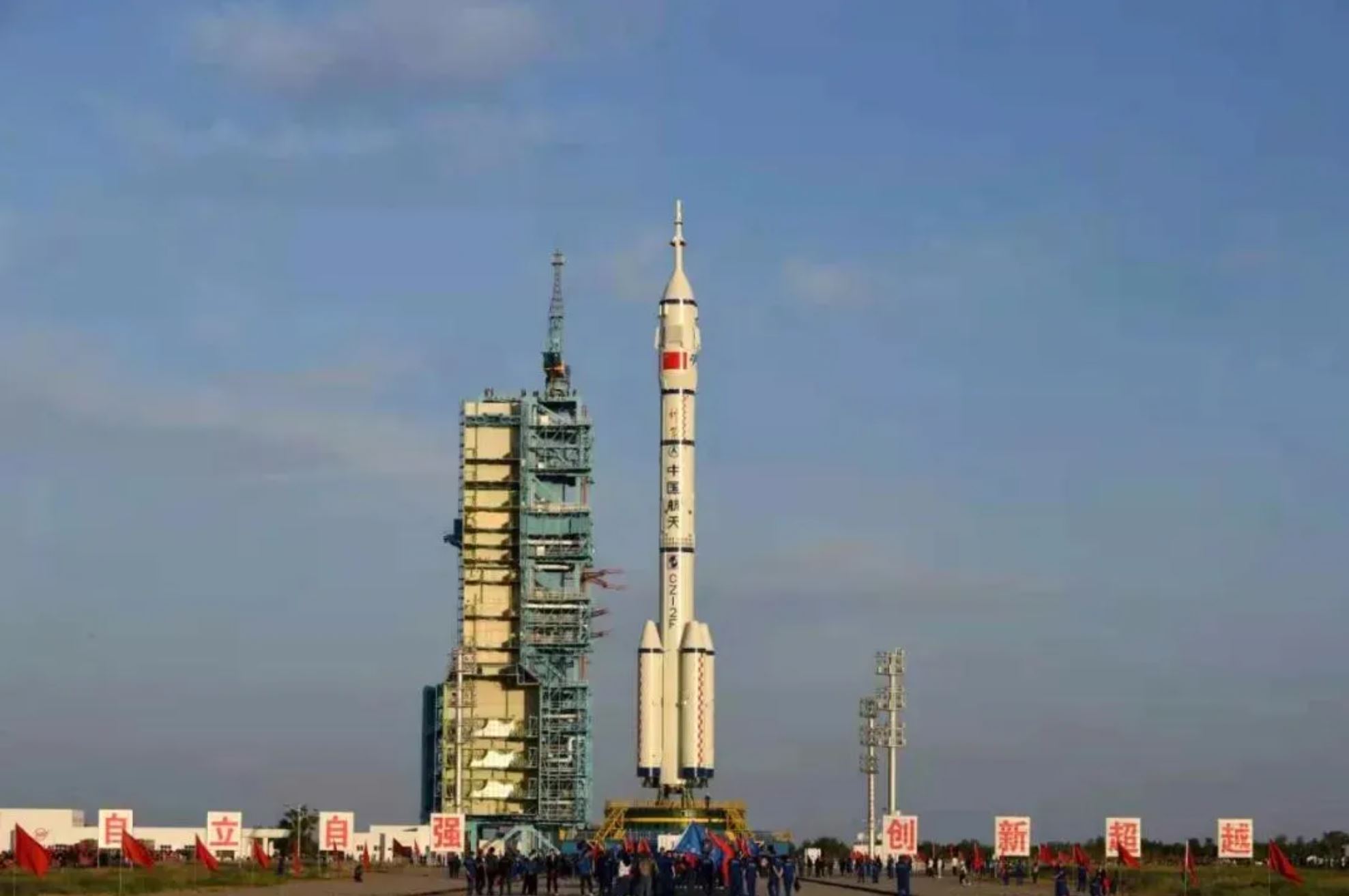HELSINKI — China rolled out a Long March 2F rocket Wednesday in preparation to send the Shenzhou-12 spacecraft and three astronauts to an orbiting space station module.
The Long March 2F rocket was vertically transferred to its pad at the Jiuquan Satellite Launch Center in the Gobi Desert, the China Manned Space Engineering Office (CMSEO) announced Wednesday.
The rocket will send Shenzhou-12 and three astronauts to the Tianhe core module for China’s space station which launched April 28 Eastern.
Authorities have yet to reveal the planned launch date nor the identity of the primary and backup crews for the mission. Shenzhou-12 was expected to launch around June 10 Beijing time but a week-long delay to the launch of the Tianzhou-2 cargo mission likely pushed back the date by a similar length of time.
The Shenzhou-12 mission will involve a series of technical verification tasks related to the performance and function of the Tianhe core module. It will include extravehicular activities using EVA suits delivered by Tianzhou-2, and verification of a regenerative life support system.
Shenzhou-12 will be the country’s first crewed mission in more than four-and-a-half years and just the seventh overall. China’s first crewed mission was Shenzhou-5 in 2003 which made the country only the third to demonstrate independent human spaceflight capabilities.
The mission will see the first time since May 2000 that two orbiting space stations will be simultaneously inhabited, when STS-101 and Soyuz TM-30 visited the ISS and Mir respectively. Three Shenzhou flights to small Tiangong space labs took place in 2012, 2013 and 2016—concurrent with permanent ISS habitation—as stepping stone missions towards the larger space station modules.
Shenzhou-12 will also set a record for Chinese human spaceflight mission duration. The mission is expected to remain docked with Tianhe until September, meaning the roughly three-month mission will far exceed the 33-day record set by Shenzhou-11 in 2016.
The Long March 2F and Shenzhou spacecraft were developed to provide human spaceflight capabilities following the approval of “Project 921” in 1992. The plan also laid out the long term vision for a modular space station.
The 62-meter-long, 464-metric-ton Long March 2F consists of two stages and four side boosters. All of these use a propellant mix of highly toxic hydrazine and nitrogen tetroxide. The launcher features a launch escape system atop of the fairing, which relies on solid rocket motors.
The 16.6-meter-long, 4.2-meter-diameter Tianhe will provide regenerative life support and the main living quarters for astronauts as well as propulsion to maintain orbital altitude.
Chinese space station construction
Shenzhou-12 will be the third of 11 missions planned for the construction phase of the three-module Chinese space station across 2021 and 2022.
The Tianzhou-3 cargo spacecraft and Shenzhou-13 crewed mission will follow in September and October respectively.
Experiment modules named Wentian and Mengtian are expected to launch in 2022. The pair will host a plethora of experiments in areas including astronomy, space medicine, space life science, biotechnology, microgravity fluid physics, microgravity combustion and space technologies.
International science payloads will also fly to the space station, through cooperation between the United Nations Office for Outer Space Affairs (UNOOSA) and the CMSEO. Foreign astronauts are also expected to visit the CSS.
Both modules will be launched by Long March 5B rockets from Wenchang. The first stage of the Long March 5B that launched Tianhe entered orbit and made a high-profile, uncontrolled reentry.
The Chinese space station is expected to operate in orbit for at least ten years. It will be joined in orbit by the Xuntian optical module, a co-orbiting Hubble-class space telescope. The space telescope will have a 2-meter-aperture comparable to Hubble but feature a field of view 300 times greater.
This field of view will allow Xuntian to survey 40 percent of the sky across a decade using its 2.5 billion pixel camera.
